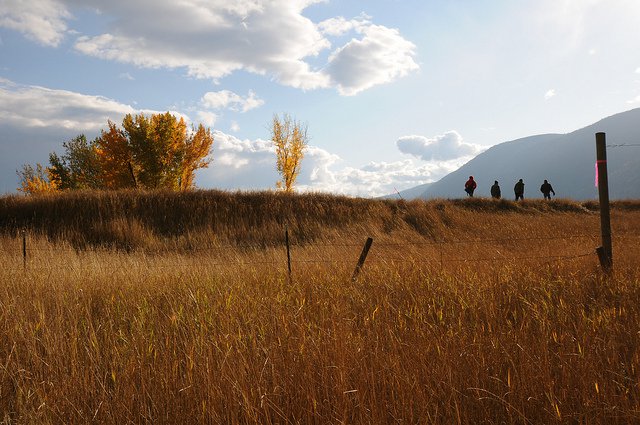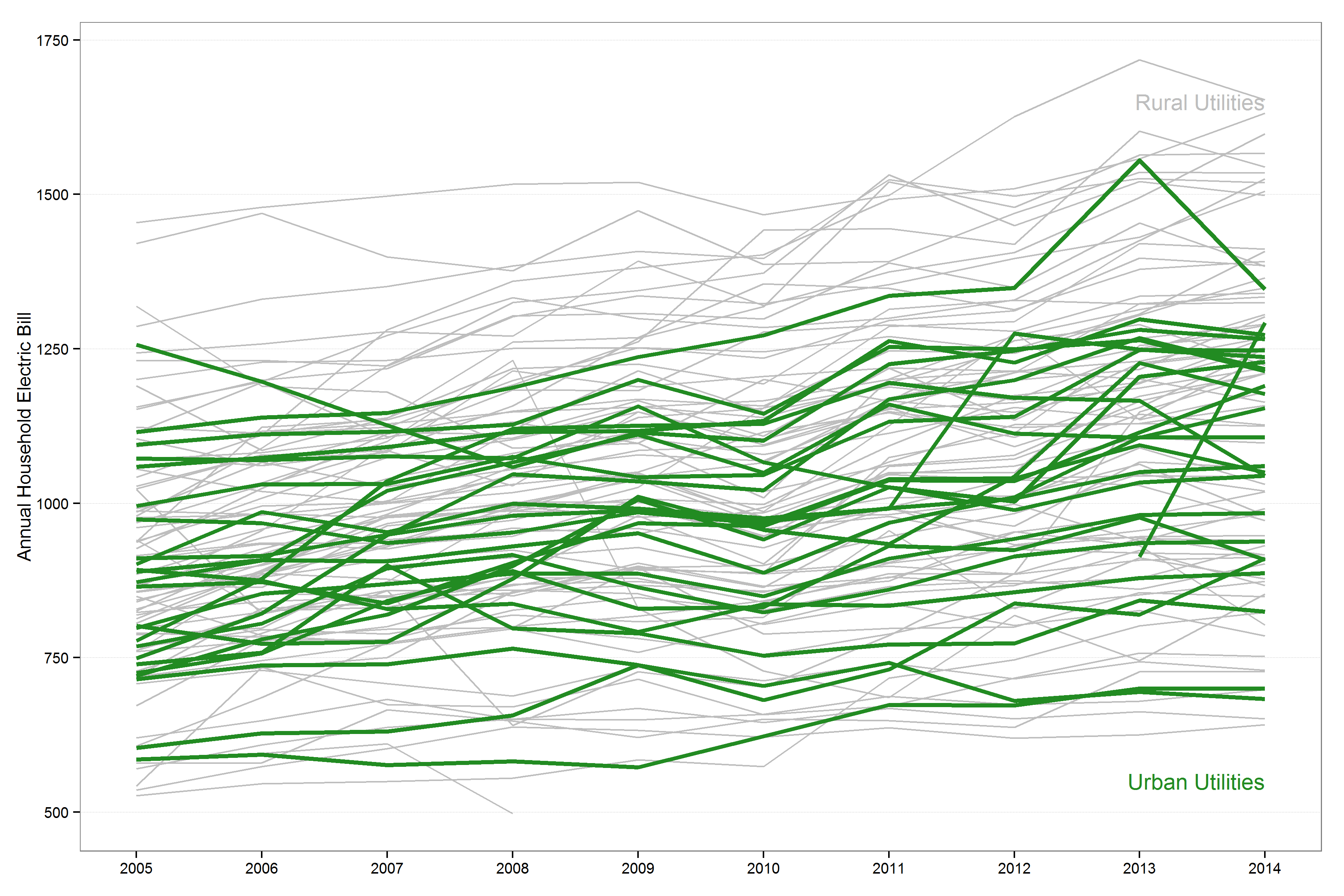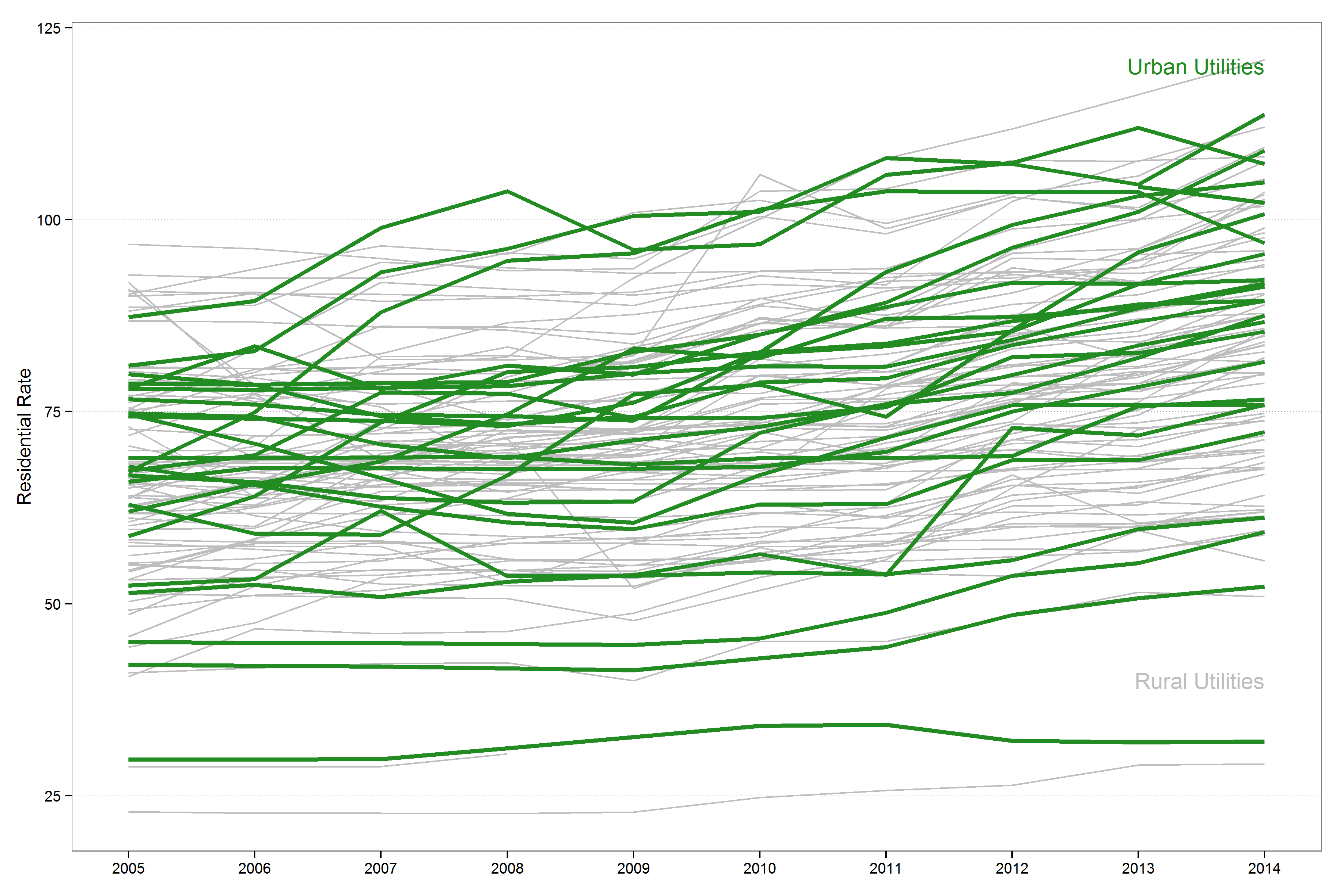Do Customers of Rural Utilities Have Higher Electricity Bills?
The Council's in-depth analysis on electricity bills in the Northwest investigates
- August 31, 2016
- Ben Kujala

The Northwest has over 100 different utilities, many of them in small, rural communities. How do their electricity bills compare with urban utility customers?
The Energy Information Administration collects information each year about how much electricity utilities have sold, to how many residential customers, and the revenue collected from those customers. Cross-referencing with data the Census Bureau collects in the American Community Survey we determined if utilities served predominantly urban or rural customers. Using these data for the Northwest, you can see that urban utilities tend to have lower bills than rural utilities.
Figure 1 - Average residential bills of urban vs. rural Northwest utilities

Looking at the rates shows that the cost per megawatt-hour isn’t significantly different. But, rural customers tend to use more energy. Natural gas heating is less common in rural communities, so many rural customers use electricity for heating. This contributes to the difference in energy use.
Figure 2 - Residential rates of urban vs. rural Northwest utilities

Also, while rural utilities are often publicly owned, and therefore have access to low-cost power from the Bonneville Power Administration, they tend to have higher costs to deliver electricity because their customers are more spread out.
Check out more in-depth analysis on electricity bills in the Northwest--see the Council’s recently released draft report.
Related:
Do Customers of Northwest Investor-owned Utilities Have Higher Electricity Bills?


